The price is available ON REQUEST
Brachial plexus injuries are mostly caused due to any traumatic or accidental damage resulting from sudden and excessive jerk to the shoulder which eventually strains the nerves. In severe cases, the nerves may also get torn apart which requires thorough medical attention and surgical treatments.
Besides being prescribed within killers, the treatments for minor injuries may range from physiotherapy to regular exercise. To reduce the pain and prevent the condition from worsening, one must refrain from heavy physical activities and outdoor sports. Besides, the surgical treatments required for the same are:
The three procedures involve transferring of nerve or a patch of thin muscle from a different, healthy portion to the damaged brachial nerves in order to re-establish the connection in the position.
Stereotactic procedures involve 3D coordinating procedures, in order to track down the area of damage and perform necessary functions. With a minimum invasion, the procedure allows performing biopsy, radiosurgery, ablation, etc. Ideal candidates for the same are candidates who:
Brachial plexus injuries/stereotactic procedures cost may vary as per the requirement and usually begins from $7500. However, the deciding factors which may result in variation are:
| Country | Minimum Cost | Minimum Local Currency | Maximum Cost | Maximum Local Currency |
|---|---|---|---|---|
| India | USD 4500 | INR 374175 | USD 6500 | INR 540475 |
Treatment cost

Dr. Rose Private Hospital located in Budapest, Hungary is accredited by JCI. Also listed below are some of the most prominent infrastructural details:

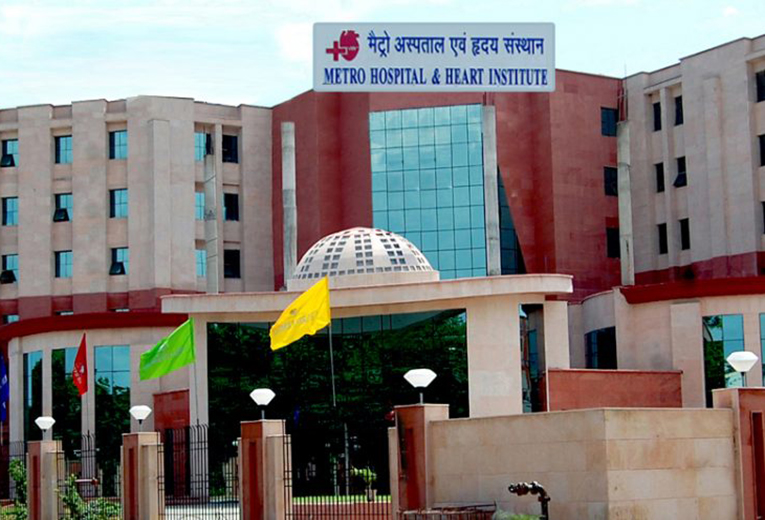
Types of Brachial Plexus Injuries/Stereotactic Procedures in Metro Hospital and its associated cost
| Treatment Option | Approximate Cost Range (USD) | Approximate Cost Range (INR) |
|---|---|---|
| Overall Brachial Plexus Surgery | 4601 - 7578 | 382040 - 608432 |
| Nerve Decompression Surgery | 2837 - 6169 | 230993 - 503085 |
| Nerve Grafting Surgery | 4748 - 7962 | 378429 - 658079 |
| Nerve Transfer Surgery | 6484 - 8455 | 535283 - 683660 |
| Free Muscle Transfer Surgery | 7568 - 9209 | 618409 - 771438 |
| Tendon Transfer Surgery | 4684 - 8062 | 387948 - 642821 |
| Nerve Repair Surgery | 2832 - 9264 | 230947 - 767702 |
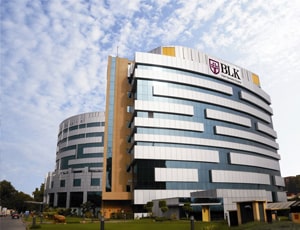
BLK-Max Super Speciality Hospital located in New Delhi, India is accredited by NABL. Also listed below are some of the most prominent infrastructural details:
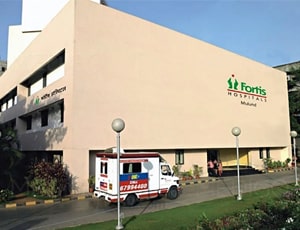
Types of Brachial Plexus Injuries/Stereotactic Procedures in Fortis Hospital, Mulund and its associated cost
| Treatment Option | Approximate Cost Range (USD) | Approximate Cost Range (INR) |
|---|---|---|
| Overall Brachial Plexus Surgery | 5721 - 8910 | 464003 - 722007 |
| Nerve Decompression Surgery | 3325 - 7351 | 275557 - 598503 |
| Nerve Grafting Surgery | 5626 - 9611 | 466010 - 804717 |
| Nerve Transfer Surgery | 7711 - 10166 | 636998 - 822184 |
| Free Muscle Transfer Surgery | 9001 - 11194 | 739585 - 930788 |
| Tendon Transfer Surgery | 5722 - 9566 | 455013 - 793047 |
| Nerve Repair Surgery | 3302 - 11425 | 279815 - 919105 |
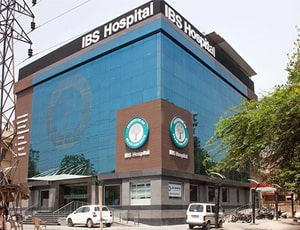
Types of Brachial Plexus Injuries/Stereotactic Procedures in IBS Hospital and its associated cost
| Treatment Option | Approximate Cost Range (USD) | Approximate Cost Range (INR) |
|---|---|---|
| Overall Brachial Plexus Surgery | 5086 - 8105 | 415209 - 667657 |
| Nerve Decompression Surgery | 3047 - 6606 | 250912 - 542535 |
| Nerve Grafting Surgery | 5096 - 8731 | 415054 - 718309 |
| Nerve Transfer Surgery | 7104 - 9095 | 580609 - 748131 |
| Free Muscle Transfer Surgery | 8122 - 10132 | 668764 - 829460 |
| Tendon Transfer Surgery | 5089 - 8658 | 415747 - 706007 |
| Nerve Repair Surgery | 3033 - 10161 | 250708 - 831694 |
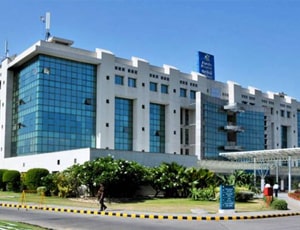
Types of Brachial Plexus Injuries/Stereotactic Procedures in Apollo Hospital International Limited and its associated cost
| Treatment Option | Approximate Cost Range (USD) | Approximate Cost Range (INR) |
|---|---|---|
| Overall Brachial Plexus Surgery | 5096 - 8081 | 417696 - 663166 |
| Nerve Decompression Surgery | 3043 - 6584 | 250629 - 539025 |
| Nerve Grafting Surgery | 5098 - 8713 | 414382 - 715492 |
| Nerve Transfer Surgery | 7094 - 9133 | 580939 - 746227 |
| Free Muscle Transfer Surgery | 8082 - 10167 | 665241 - 830961 |
| Tendon Transfer Surgery | 5084 - 8630 | 416568 - 704499 |
| Nerve Repair Surgery | 3052 - 10145 | 249972 - 836286 |
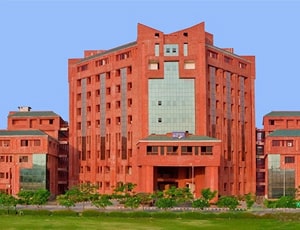
Types of Brachial Plexus Injuries/Stereotactic Procedures in Sharda Hospital and its associated cost
| Treatment Option | Approximate Cost Range (USD) | Approximate Cost Range (INR) |
|---|---|---|
| Overall Brachial Plexus Surgery | 4708 - 7410 | 383867 - 606008 |
| Nerve Decompression Surgery | 2828 - 6065 | 233128 - 500157 |
| Nerve Grafting Surgery | 4707 - 8134 | 389377 - 668292 |
| Nerve Transfer Surgery | 6626 - 8332 | 533537 - 683528 |
| Free Muscle Transfer Surgery | 7560 - 9471 | 607028 - 764877 |
| Tendon Transfer Surgery | 4675 - 8017 | 378504 - 642196 |
| Nerve Repair Surgery | 2797 - 9373 | 231094 - 768154 |

Fortis Memorial Research Institute located in Gurugram, India is accredited by JCI, NABH. Also listed below are some of the most prominent infrastructural details:

Types of Brachial Plexus Injuries/Stereotactic Procedures in Medicana Avcilar and its associated cost
| Treatment Option | Approximate Cost Range (USD) | Approximate Cost Range (TRY) |
|---|---|---|
| Overall Brachial Plexus Surgery | 8037 - 11274 | 240660 - 340428 |
| Nerve Decompression Surgery | 2214 - 5530 | 67440 - 170414 |
| Nerve Grafting Surgery | 3321 - 6729 | 99779 - 202634 |
| Nerve Transfer Surgery | 5676 - 8987 | 172168 - 272605 |
| Free Muscle Transfer Surgery | 7892 - 11106 | 237415 - 333528 |
| Tendon Transfer Surgery | 3448 - 8011 | 103510 - 232082 |
| Nerve Repair Surgery | 2253 - 5681 | 67680 - 173007 |
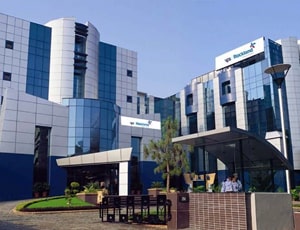
Types of Brachial Plexus Injuries/Stereotactic Procedures in Medeor Hospital and its associated cost
| Treatment Option | Approximate Cost Range (USD) | Approximate Cost Range (INR) |
|---|---|---|
| Overall Brachial Plexus Surgery | 5054 - 8128 | 416885 - 667467 |
| Nerve Decompression Surgery | 3042 - 6583 | 250621 - 541519 |
| Nerve Grafting Surgery | 5071 - 8750 | 415391 - 718020 |
| Nerve Transfer Surgery | 7114 - 9148 | 582683 - 752465 |
| Free Muscle Transfer Surgery | 8129 - 10197 | 663348 - 832378 |
| Tendon Transfer Surgery | 5073 - 8664 | 414299 - 705391 |
| Nerve Repair Surgery | 3042 - 10166 | 249337 - 829530 |
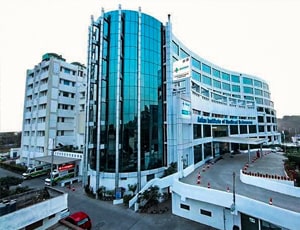
Types of Brachial Plexus Injuries/Stereotactic Procedures in Asian Institute of Medical Sciences and its associated cost
| Treatment Option | Approximate Cost Range (USD) | Approximate Cost Range (INR) |
|---|---|---|
| Overall Brachial Plexus Surgery | 5093 - 8139 | 414651 - 664056 |
| Nerve Decompression Surgery | 3057 - 6622 | 250657 - 543466 |
| Nerve Grafting Surgery | 5088 - 8754 | 416205 - 717874 |
| Nerve Transfer Surgery | 7112 - 9160 | 582976 - 752008 |
| Free Muscle Transfer Surgery | 8099 - 10125 | 664098 - 835849 |
| Tendon Transfer Surgery | 5067 - 8634 | 415127 - 704774 |
| Nerve Repair Surgery | 3056 - 10106 | 250071 - 835827 |
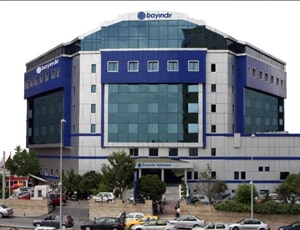
Types of Brachial Plexus Injuries/Stereotactic Procedures in Bayindir Healthcare Group and its associated cost
| Treatment Option | Approximate Cost Range (USD) | Approximate Cost Range (TRY) |
|---|---|---|
| Overall Brachial Plexus Surgery | 7851 - 11484 | 237044 - 345502 |
| Nerve Decompression Surgery | 2220 - 5701 | 66939 - 169310 |
| Nerve Grafting Surgery | 3364 - 6729 | 101357 - 203972 |
| Nerve Transfer Surgery | 5570 - 8982 | 166458 - 275528 |
| Free Muscle Transfer Surgery | 8014 - 11259 | 234150 - 345996 |
| Tendon Transfer Surgery | 3373 - 7971 | 100654 - 240565 |
| Nerve Repair Surgery | 2210 - 5677 | 68197 - 167091 |

Types of Brachial Plexus Injuries/Stereotactic Procedures in Medicana Sivas Hospital and its associated cost
| Treatment Option | Approximate Cost Range (USD) | Approximate Cost Range (TRY) |
|---|---|---|
| Overall Brachial Plexus Surgery | 7947 - 11062 | 240949 - 333483 |
| Nerve Decompression Surgery | 2268 - 5697 | 67709 - 171399 |
| Nerve Grafting Surgery | 3434 - 6682 | 103128 - 206135 |
| Nerve Transfer Surgery | 5698 - 9032 | 169763 - 266244 |
| Free Muscle Transfer Surgery | 7847 - 11422 | 241667 - 345241 |
| Tendon Transfer Surgery | 3413 - 7978 | 101477 - 236503 |
| Nerve Repair Surgery | 2237 - 5708 | 66678 - 169002 |
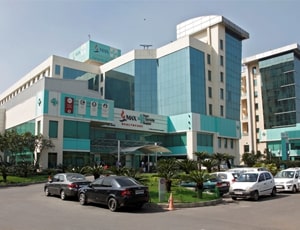
Max Super Speciality Hospital is a multi- super speciality intensive care centre, which has an excellent team of doctors, most advanced infrastructure of global standards in services and diagnosis, best practices for treatment, and the latest technology of machinery.
Infrastructure & Facilities:
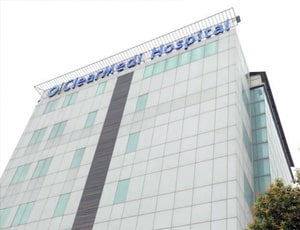
Types of Brachial Plexus Injuries/Stereotactic Procedures in Clear Medi Hospital, Karkardooma and its associated cost
| Treatment Option | Approximate Cost Range (USD) | Approximate Cost Range (INR) |
|---|---|---|
| Overall Brachial Plexus Surgery | 5052 - 8087 | 416119 - 664817 |
| Nerve Decompression Surgery | 3042 - 6594 | 250497 - 543438 |
| Nerve Grafting Surgery | 5060 - 8726 | 416159 - 713195 |
| Nerve Transfer Surgery | 7079 - 9157 | 580424 - 746640 |
| Free Muscle Transfer Surgery | 8091 - 10137 | 667358 - 835814 |
| Tendon Transfer Surgery | 5061 - 8592 | 417026 - 706205 |
| Nerve Repair Surgery | 3056 - 10105 | 249482 - 833952 |
The brachial plexus is a network of nerves that extends from the spinal cord in the neck down the arm, controlling muscle movement in the wrist, hand, shoulder, and elbow. Brachial plexus injury is a medical emergency caused by trauma to the network of nerves called the brachial plexus, while some brachial plexus injuries are minor, others are more complex and require surgery for treatment. Damage to these nerves, also known as brachial plexopathy, can result in loss of function and sensation. Prompt medical intervention is crucial to evaluate the severity of the nerve damage and initiate appropriate treatment to facilitate recovery and prevent potential long-term complications.
Stereotactic surgery is a minimally invasive procedure that utilizes a three-dimensional coordination system to pinpoint targets within the body and perform actions such as injections, biopsies, ablations, and implantations. This precise surgical technique is essential for ensuring accurate diagnosis and effective treatment for patients. Stereotactic procedures can be performed on any organ in the body, allowing for targeted interventions and improved patient outcomes.
Stereotactic procedures can be classified into several categories based on their specific applications and techniques. Here are some common classifications:
Several common surgical treatments for brachial plexus injuries include:
Determining an exact recovery time after brachial plexus injury treatment is challenging due to the wide range of injury severities and types. The likelihood of spontaneous recovery varies based on the specific characteristics of the injury.
Following surgery, nerve tissue regenerates slowly, typically at a rate of about an inch per month. Consequently, it may take several years to fully evaluate the success of brachial plexus injury surgery. Throughout the recovery process, patients are advised to maintain joint flexibility through a prescribed exercise regimen.
Although the success rate of surgery is generally favorable, both the recovery period and success rate must be assessed on an individual basis, considering factors such as the extent of nerve damage and the patient's overall health.
Ask your healthcare adviser for the best multiple options and choose the one that meets your expectations
The Brachial Plexus Injuries/Stereotactic Procedures package cost in Hungary varies from one hospital to another and may offer different benefits. Some of the best hospitals for Brachial Plexus Injuries/Stereotactic Procedures offer a comprehensive package that covers the end-to-end expenses related to investigations and treatment of the patient. Typically, the package cost of Brachial Plexus Injuries/Stereotactic Procedures in Hungary includes the expenses related to the surgeon's fee, anesthesia, hospital, meals, nursing and ICU stay. A prolonged hospital stay due to delayed recovery, new diagnosis and complications after surgery may increase the cost of Brachial Plexus Injuries/Stereotactic Procedures in Hungary.
Brachial Plexus Injuries/Stereotactic Procedures in Hungary is offered by multiple hospitals across the country. The top hospitals for Brachial Plexus Injuries/Stereotactic Procedures in Hungary include the following:
The recovery of the patient many vary, depending on several factors. However, on an average, patient is supposed to stay for about 18 days in the country after discharge. This time frame is important to ensure that the surgery was successful and the patient is fit to fly back.
Apart from the Brachial Plexus Injuries/Stereotactic Procedures cost, there are a few other daily charges that the patient may have to pay. These are the charges for daily meals and accommodation outside the hospital. The extra charges may start from USD 50 per person.
The following are some of the best cities for Brachial Plexus Injuries/Stereotactic Procedures in Hungary:
The patient is supposed to stay at the hospital for about 3 days after Brachial Plexus Injuries/Stereotactic Procedures for monitoring and care. The patient is subjected to several biochemistry and radiological scans to see that everything is okay and the recovery is on track. After making sure that patient is clinically stable, discharge is planned.
There are more than 1 hospitals that offer Brachial Plexus Injuries/Stereotactic Procedures in Hungary. Such clinics have the required infrastructure and a dedicated unit where patients can be treated. Such hospitals follow all legal protocols and guidelines as specified by the local medical affairs body when it comes to the treatment of international patients.
Some of the renowned medical specialists for Brachial Plexus Injuries/Stereotactic Procedures in Hungary are: